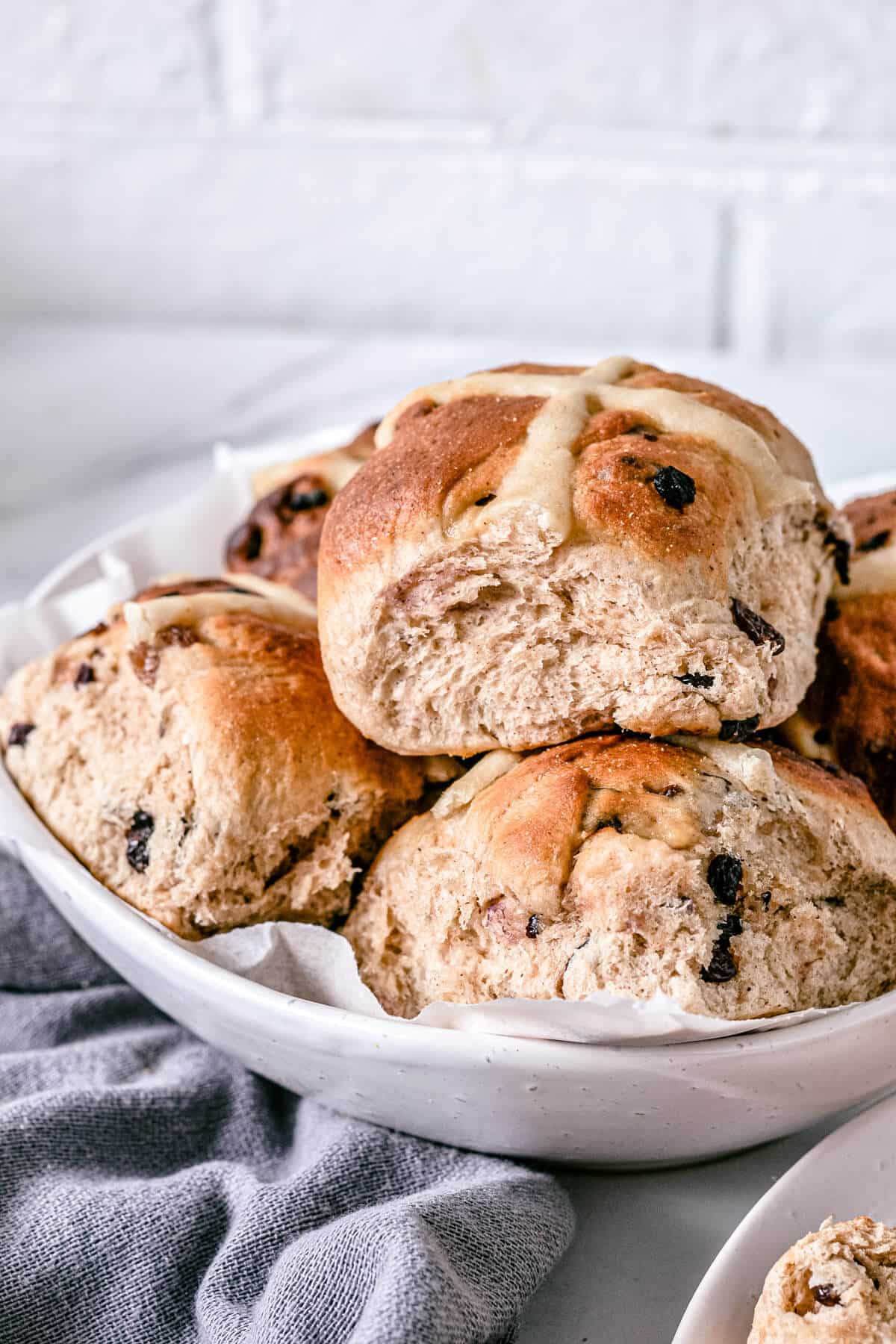Don’t over-heat the milk. When heating the milk to activate the yeast, it needs to be warm but not scalding. Hot milk will kill the yeast. Heat it on low heat in a saucepan until warm to touch, without burning.
Avoid too much flour. Soft, sticky dough is best and will rise better than dry dough with too much flour. If your dough is too sticky, slowly sprinkle a little more flour until soft. The dough will feel firm before kneading, but after 10 minutes it should feel much more soft and elastic.
Find a nice, warm spot for the dough. In some climates, this can be tricky. My house is always cold around Easter time, so it can be challenging to find a warm spot for the yeast to work its magic. If you have a warm, sunny spot that’s great. If not, try adding it to a warmed and turned off oven on very low heat (around 30-40 C).

For even cooking, weigh the dough when dividing the mixture into balls. To ensure that all of the buns cook evenly, I cut my dough into portions, weighing the balls to ensure they are a similar weight. This is not necessary, but helps ensure that all of the buns have finished cooking at the same time.
Storage: This recipe can also be made ahead of time and the dough stored in the fridge or freezer. Allow the dough to return to room temperature before
baking, as cold dough will not rise. Store the uncooked dough in the fridge for up to 5 days, or cover and freeze for up to 3 months.
Cooked/ready made hot cross buns can be cooled and kept at room temperature for 1-2 days, or frozen in an airtight container for up to 3 months. Imagine having a stash in your freezer, ready for whenever the desire for toasted hot cross buns with butter hits!
Nutrition
Calories: 347kcal | Carbohydrates: 64g | Protein: 9g | Fat: 7g | Saturated Fat: 4g | Cholesterol: 29mg | Sodium: 170mg | Potassium: 304mg | Fiber: 4g | Sugar: 22g | Vitamin A: 258IU | Vitamin C: 1mg | Calcium: 58mg | Iron: 3mg

